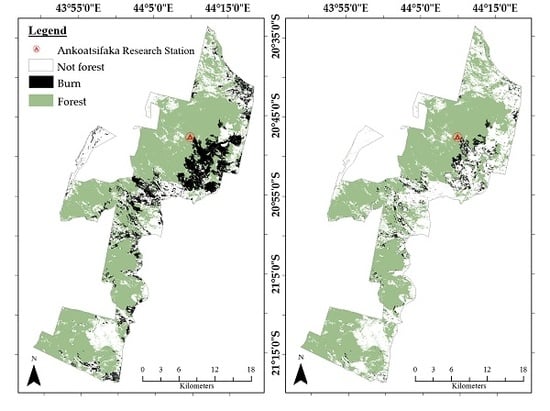Burned Area Mapping of an Escaped Fire into Tropical Dry Forest in Western Madagascar Using Multi-Season Landsat OLI Data
Abstract
Share and Cite
Axel, A.C. Burned Area Mapping of an Escaped Fire into Tropical Dry Forest in Western Madagascar Using Multi-Season Landsat OLI Data. Remote Sens. 2018, 10, 371. https://doi.org/10.3390/rs10030371
Axel AC. Burned Area Mapping of an Escaped Fire into Tropical Dry Forest in Western Madagascar Using Multi-Season Landsat OLI Data. Remote Sensing. 2018; 10(3):371. https://doi.org/10.3390/rs10030371
Chicago/Turabian StyleAxel, Anne C. 2018. "Burned Area Mapping of an Escaped Fire into Tropical Dry Forest in Western Madagascar Using Multi-Season Landsat OLI Data" Remote Sensing 10, no. 3: 371. https://doi.org/10.3390/rs10030371
APA StyleAxel, A. C. (2018). Burned Area Mapping of an Escaped Fire into Tropical Dry Forest in Western Madagascar Using Multi-Season Landsat OLI Data. Remote Sensing, 10(3), 371. https://doi.org/10.3390/rs10030371





